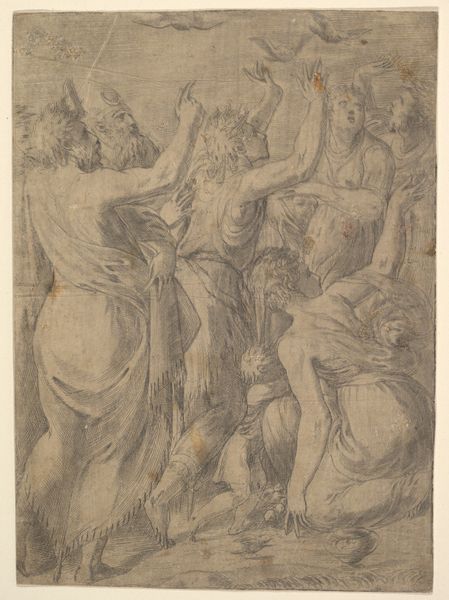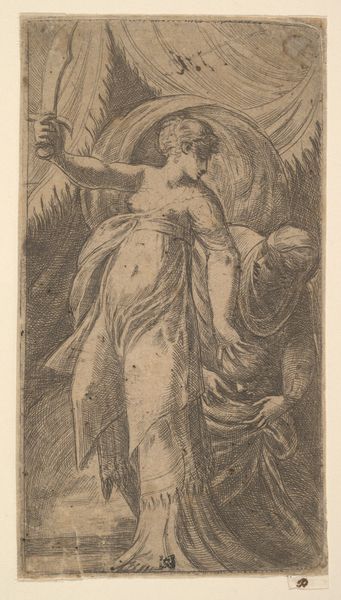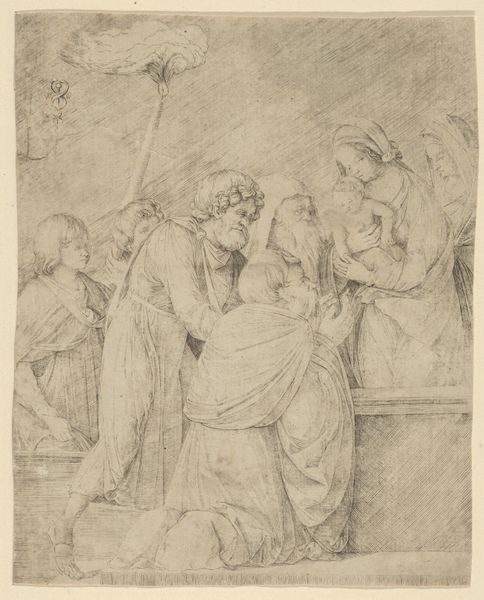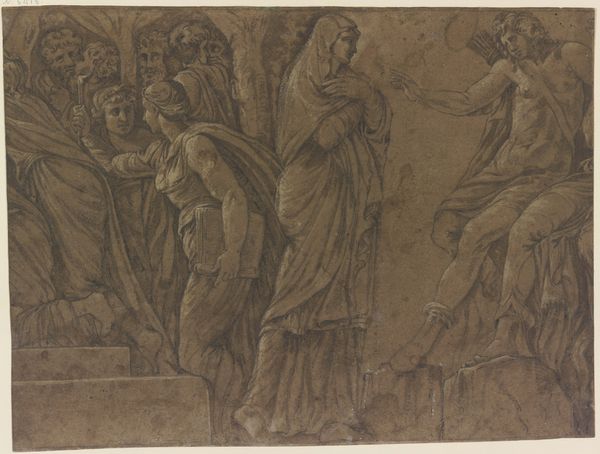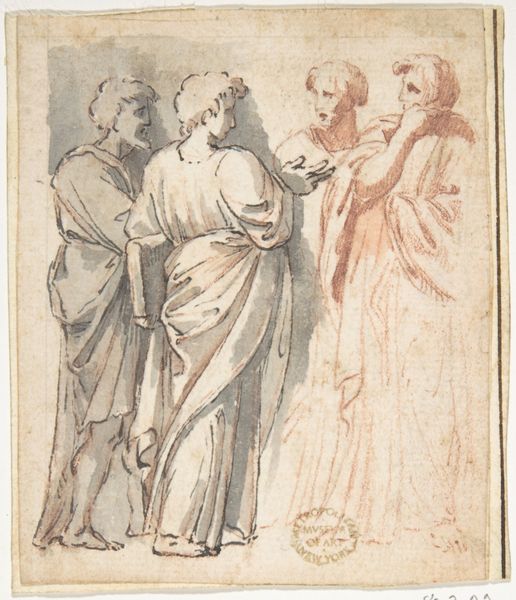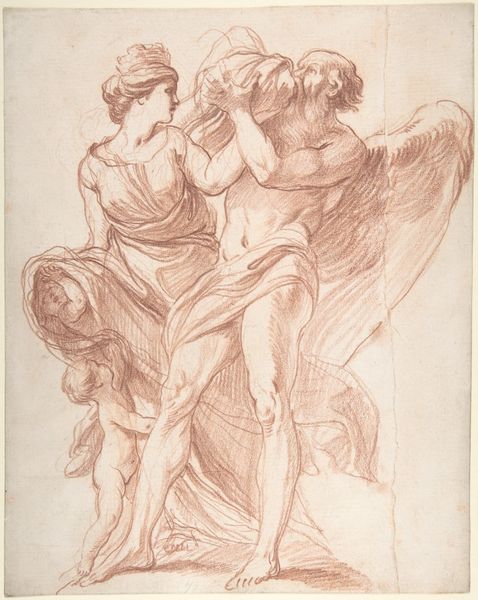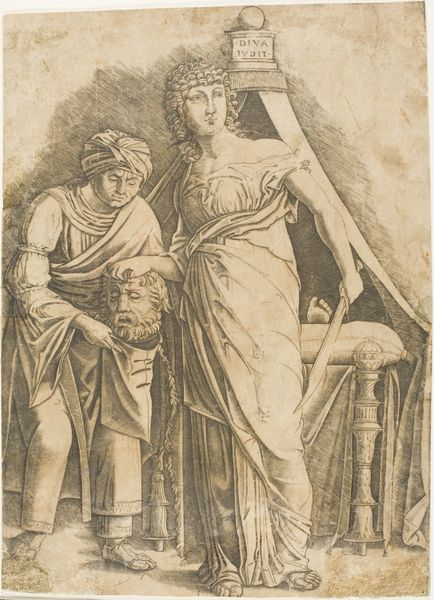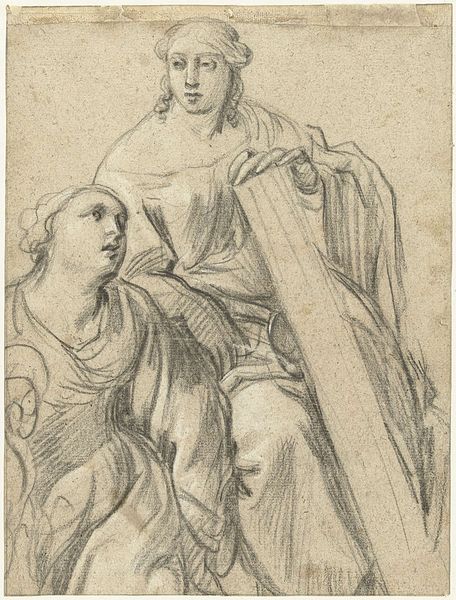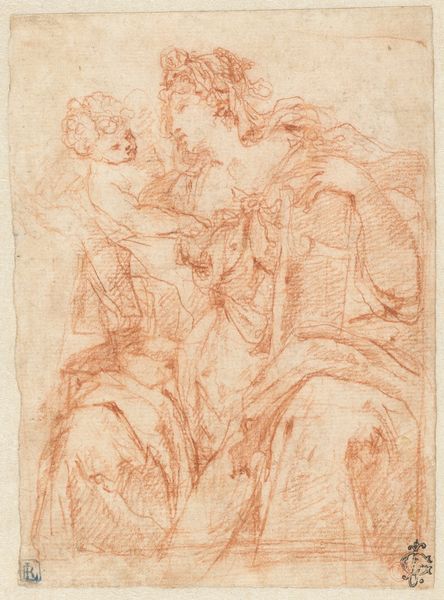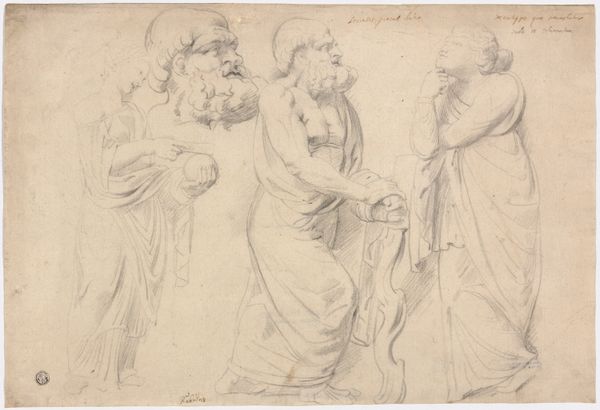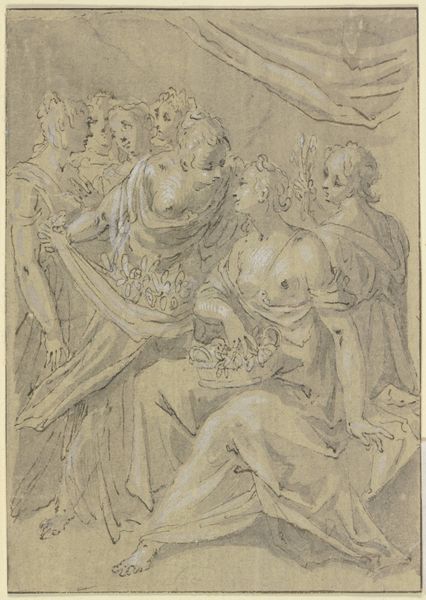
drawing, paper, charcoal
#
portrait
#
drawing
#
charcoal drawing
#
figuration
#
paper
#
romanesque
#
group-portraits
#
charcoal
#
history-painting
#
academic-art
Dimensions: 7-1/4 x 5 in
Copyright: Public Domain
Curator: My first impression is the powerful stillness that emanates from this work. There's a monumental quality, even within the intimacy of the drawing. Editor: This drawing, titled "Group of Women," from around 1700 to 1800, is held here at the Metropolitan Museum of Art. The anonymous artist utilized charcoal on paper, offering a glimpse into a time when history painting and figuration held great significance. Curator: The arrangement of the figures suggests an attempt to evoke the canon of classical beauty; there's a palpable aspiration for an almost Greco-Roman feel. Editor: Indeed, we can note the loose Romanesque and Academic artistic tendencies, influencing both the composition and the very ethos that breathes through this study. It’s as if the artist sought to anchor themselves in a longer cultural lineage. Did these idealized depictions affect women’s standing in art, and more importantly, society? Curator: The rendering of their drapery carries much symbolic weight. Draped fabric can represent concealment but also protection. Notice how each woman has a different way of wearing the classical robes, implying a unique identity within the group dynamic, and it adds dimension to their presentation. The figures exude a shared narrative while remaining distinctly separate in mood and attitude. Editor: A key issue is the artwork's history; it serves to underscore institutional biases. These women are viewed through a lens that is fundamentally unequal, shaped as objects of admiration for public consumption rather than complex representations of the women themselves. We miss who they were by placing this image into our modern era's context. Curator: True. In this interplay of concealment and display, there may exist unspoken dimensions. As the women project confidence, could there be hidden signs of self-preservation—messages to each other, known only to a sisterhood. Editor: Reflecting on our discussion, this work pushes us to evaluate how art becomes interwoven with the cultural understanding of representation and self-representation within these historic frameworks. Curator: It seems this artwork functions as a conduit to unearth connections to shared collective experience and hidden meanings, which lie just beneath the surface of artistic legacy.
Comments
No comments
Be the first to comment and join the conversation on the ultimate creative platform.
